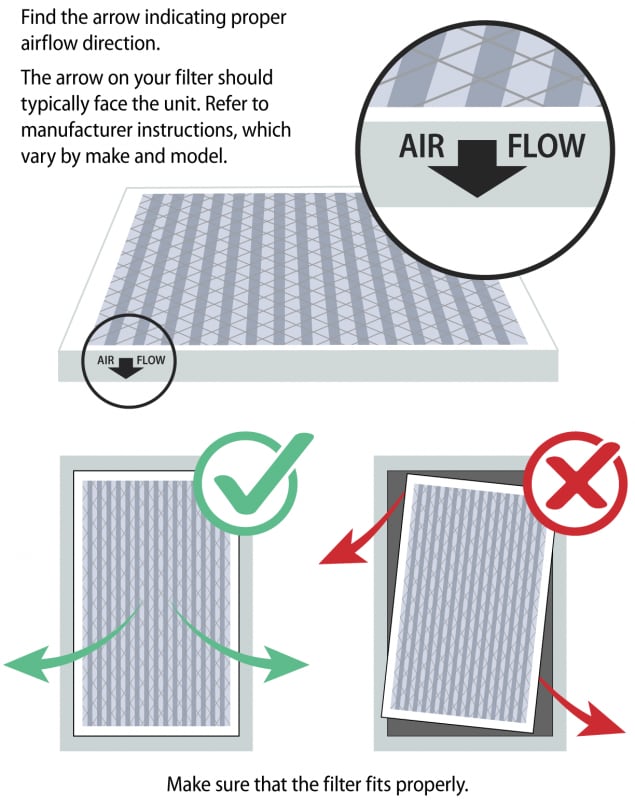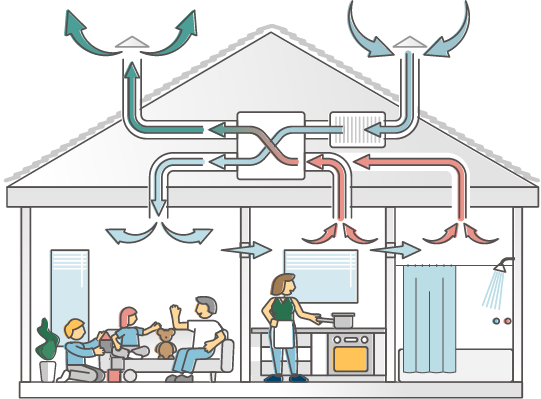FAQs About Home Ventilation Melbourne Every Homeowner Should Read
Comprehending the Relevance of Home Ventilation for a Healthier Living Atmosphere
Home air flow plays an essential function in preserving a healthy and balanced living atmosphere. It promotes the exchange of indoor and outside air, which is essential for enhancing air high quality. Without appropriate air flow, homes can become reproducing premises for irritants and contaminants. The effects of poor air circulation can be significant. This brings up the questions of just how homeowners can efficiently execute ventilation strategies to protect their health and well-being. Comprehending these techniques is crucial.

The Fundamentals of Home Air Flow
Home air flow acts as an essential element of indoor air high quality and convenience. It includes the procedure of exchanging stagnant indoor air with fresh outdoor air, consequently lowering moisture and regulating temperature level. Correct air flow systems can consist of all-natural techniques, such as open home windows and vents, in addition to mechanical systems, such as exhaust fans and air exchangers. Effective home ventilation helps prevent issues like indoor mold and mildew growth and the build-up of hazardous particles. It also enhances overall power performance, as well-ventilated spaces can maintain comfortable temperatures with much less dependence on home heating and cooling systems. Understanding the essentials of home ventilation is crucial for house owners looking for to develop a much healthier living atmosphere for themselves and their households.

Typical Resources of Indoor Air Contamination

Lots of may not recognize it, interior air pollution can originate from different resources within a house. Typical factors include unstable natural substances (VOCs) released from paints, solvents, and cleansing items. House appliances, such as gas ovens and fire places, can launch harmful gases like carbon monoxide gas and nitrogen dioxide. Furthermore, mold and mildew and mold prosper in moist areas, launching spores that influence air quality. Pet dander, dirt termites, and plant pollen can accumulate indoors, further worsening contamination levels. Smoking indoors creates hazardous chemicals that remain in the air. Developing materials, consisting of asbestos and formaldehyde, can off-gas dangerous materials. Recognizing these sources is important for preserving a healthier interior environment and promoting reliable air flow methods.
Wellness Results of Poor Air Flow
Interior air contamination can have substantial health ramifications, especially when air flow is inadequate. Poor air flow can lead to the buildup of harmful pollutants, such as unpredictable organic compounds, mold, and particulate issue. This accumulation might lead to respiratory system problems, including bronchial asthma, allergies, and persistent obstructive pulmonary illness. Individuals may experience symptoms like headaches, tiredness, and irritation of the eyes, nose, and throat. Vulnerable populaces, such as children and the senior, are at higher threat for serious wellness impacts. Long-lasting exposure to improperly aerated settings can likewise add to extra significant conditions, consisting of heart diseases. As a result, ensuring proper air flow is necessary for maintaining a healthy and balanced living atmosphere and lowering the risk of wellness difficulties related to indoor air contamination.
Effective Air Flow Techniques for Your Home
Appropriate air flow is essential for maintaining a healthy and balanced indoor environment, and applying efficient strategies can considerably Continued enhance air top quality. Homeowners can start by ensuring that exhaust fans are installed in bathrooms and kitchens to get rid of excess dampness and smells. Opening up windows on a regular basis permits fresh air to circulate, especially throughout moderate weather. Furthermore, utilizing air purifiers with HEPA filters can aid capture airborne pollutants. For homes with home heating and cooling down systems, keeping heating and cooling systems and transforming filters consistently is crucial for peak efficiency. Incorporating all-natural ventilation strategies, such as cross-ventilation, can also improve air movement. Ultimately, securing any type of leakages in home windows and doors stops unwanted drafts, which can disrupt controlled air flow, eventually causing improved indoor air quality and comfort.
Preserving Ideal Air High Quality Year-Round
To keep optimal air quality year-round, property owners should adopt an aggressive strategy to managing their indoor setting. Consistently monitoring indoor air quality is essential; this includes checking for contaminants such as dust, mold and mildew, and unstable organic substances (VOCs) Carrying out effective ventilation systems, such as exhaust followers and air purifiers, can considerably decrease air-borne contaminants. In addition, regular maintenance of a/c systems guarantees peak performance and air circulation. House owners must additionally consider humidity levels, as excessive wetness can result in mold and mildew growth. Seasonal changes may necessitate adjustments in air flow strategies to accommodate differing outside air quality. By prioritizing these methods, house owners can develop a much healthier living room, promoting general well-being for all occupants throughout the year.
Often Asked Inquiries
Just How Can I Inform if My Home Needs Much Better Air Flow?
To establish if a home requires far better ventilation, one must observe indicators such as relentless moisture, mold and mildew development, musty smells, condensation on home windows, or raised allergy symptoms, indicating insufficient air movement and potentially inadequate indoor air top quality.
What Are the Indications of Poor Indoor Air Quality?

Can Houseplants Improve Indoor Air Top Quality Effectively?
The effectiveness of houseplants in improving indoor air top quality is disputed. While some studies recommend they can soak up toxins and create oxygen, their overall impact may be very little contrasted to correct air flow and air filtration systems.
Exactly how Usually Should I Adjustment My Air Filters?
The frequency of air filter adjustments usually depends click for more upon usage and filter type. helpful site Usually, it is recommended to replace filters every 3 months, though families with allergies or pet dogs may call for more constant changes for excellent performance.
Are There Any Kind Of Certain Air Flow Systems for Allergic Reaction Sufferers?
Lots of ventilation systems, such as HEPA-filtered systems, successfully reduce allergens airborne. Home Ventilation Melbourne. These systems catch plant pollen, dust, and pet dog dander, supplying allergic reaction victims with a cleaner, healthier indoor atmosphere while managing air top quality successfully
It helps with the exchange of indoor and outside air, which is crucial for improving air top quality. Home ventilation serves as a crucial part of interior air high quality and comfort. It includes the procedure of exchanging stale indoor air with fresh outdoor air, thus reducing moisture and managing temperature. Indoor air pollution can have significant health implications, especially when air flow is inadequate. Proper ventilation is important for maintaining a healthy and balanced interior setting, and carrying out effective approaches can considerably boost air quality.